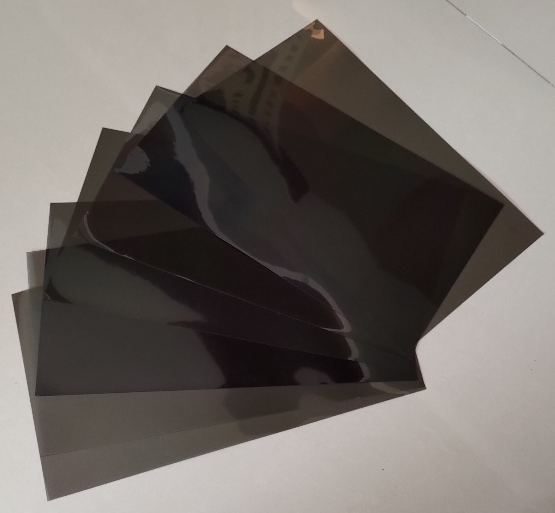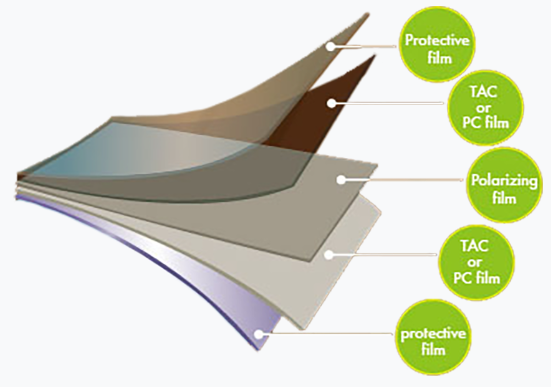Polarizer is an essential component of LCD display screen, especially with the emergence of full lamination technology, polarizer is used more and more in LCD display screen.
The full name of polarizer is polarizing film. The reason why polarizer is called polarizer is that the polarizer facing the eyes of ordinary LCD display is frosted to dissipate surface reflection and scatter light to increase the viewing angle of LCD display.
What is a polarizer?
From a physical point of view, the imaging of LSP LCD screens must rely on polarized light. All liquid crystals have two polarizers in front and back that are close to the liquid crystal glass, forming a liquid crystal sheet with a total thickness of about 1mm. If any polarizer is missing, the liquid crystal sheet cannot display images. Therefore, polarizers are a key component in the production of liquid crystal screens.
In the LCD display industry, polarizers are widely used, and LCD screens all use polarizers. The role of polarizers is to develop together with liquid crystals. In the production process, generally two pieces of ordinary tempered glass are first printed with circuits, coated with a plastic frame around them, and then folded and pressed together. Then, liquid crystal is injected in the middle of the two sides of the glass, and polarizers are attached to the top and bottom of the glass to seal.

The structure of polarizer
The polarizing structure is shown in the figure, which includes protective film, TAC or PC, PVA, etc. The protective film is used to protect the surface of the polarizer and needs to be torn off when the customer uses it; TAC or PC is used to fix and protect PVA, making it less likely to crack, shrink, and block the optical effects of moisture, and can provide different surface treatment functions; PVA is the main body of polarizing light.

What role does the polarizer play in LCD displays?
Polarizers can control the direction of a specific light beam. When natural light passes through a polarizer, the light perpendicular to the transmission axis of the polarizer will be absorbed and unable to pass through, leaving only the light parallel to the transmission axis of the polarizer, forming a light and dark contrast and achieving the function of picture display.
How many types of polarizers are there?
Fully transparent polarizer: It allows the backlight of the display to pass through completely, making efficient use of the light source, making the display present high brightness, so that the viewer can clearly read the displayed content. Suitable for displays that do not consider backlight energy consumption.
Reflective polarizer: It cannot allow the backlight to pass through, but under its reflective effect, it can reflect the displayed content to the viewer through the reflection of natural light to achieve the purpose of reading. It is suitable for outdoor sunny environments, without the use of backlight, and low power consumption.
Semi-transparent and semi-reflective polarizer: It can allow the backlight to pass through and has reflective properties, so it can combine the advantages of the above two types. The disadvantage is that it is expensive.
For more relevant knowledge, please contact us directly!